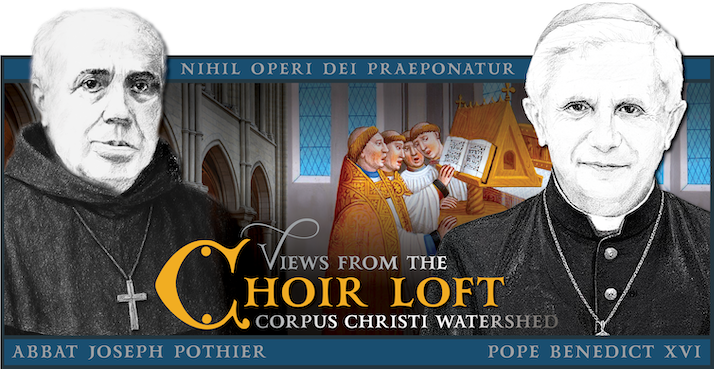
 N SPITE OF ALL the access to technology our society has—including the spectacular iPhone, which allows anyone to access 80% of the books ever written—false ideas about the sacred liturgy seem more prevalent than ever. For example, only a tiny percentage of Catholic choirmasters, priests, and organists realize that the ADALBERT PROPERS were only included in the Missal for the convenience of priests offering private Masses (or Masses without music). Many have attempted to remedy this situation, but with little success. The late Dr. William Mahrt wrote in 2015: “Worse, composers are now setting [Adalbert’s] propers to music—even to chant—though these texts were explicitly for spoken recitation only.” In 1983, Archbishop Bugnini reminded his readers that the ADALBERT PROPERS “were intended to be recited, not sung.” Indeed, printed at the very beginning of every single copy of the MISSALE ROMANUM since 1970 is the following declaration by Pope Saint Paul VI (3 April 1969):
N SPITE OF ALL the access to technology our society has—including the spectacular iPhone, which allows anyone to access 80% of the books ever written—false ideas about the sacred liturgy seem more prevalent than ever. For example, only a tiny percentage of Catholic choirmasters, priests, and organists realize that the ADALBERT PROPERS were only included in the Missal for the convenience of priests offering private Masses (or Masses without music). Many have attempted to remedy this situation, but with little success. The late Dr. William Mahrt wrote in 2015: “Worse, composers are now setting [Adalbert’s] propers to music—even to chant—though these texts were explicitly for spoken recitation only.” In 1983, Archbishop Bugnini reminded his readers that the ADALBERT PROPERS “were intended to be recited, not sung.” Indeed, printed at the very beginning of every single copy of the MISSALE ROMANUM since 1970 is the following declaration by Pope Saint Paul VI (3 April 1969):
“The texts intended for singing found in the Graduale Romanum have been left unchanged. In the interest of their being more easily understood, however, the Entrance and Communion antiphons have been revised for use in Masses without music.”
In November of 2007, Bishop Donald Trautman (chairman of the USCCB Committee on the Liturgy) made the following pronouncement:
“Recent research, confirmed by unofficial discussions with officials of the Holy See during the past several years, has made clear that the antiphons of the ORDER OF MASS were never intended to be sung, but are provided without notation to be recited whenever the Graduale Romanum or another song is not sung.”
As if to dispel any possibility of being misunderstood, Most Rev’d Trautman then repeated that the ADALBERT PROPERS “which differ substantially from the sung antiphons of the Roman Gradual, were never intended to be sung.”

The Psalter • If you conducted a survey, how many Catholic musicians realize that 90% of Gregorian Chant comes directly from the book of psalms? (Broadly speaking, the rest is taken from the NEW TESTAMENT.) For instance, because I’m familiar with Gregorian Chant, I can sing from memory several different chants—such as this one—which come from Psalm 117:
* PDF Download • COMPARISON CHART (Psalm 117)
—Various Roman Catholic translations of Psalm 117.
If you’re wondering why I placed all those translations (see above) alongside one another, it’s because doing so helps me “enter into” the sacred text. Moreover, when it comes to choosing psalm verses, I often “pick and choose” from various approved translations because I’m sensitive to the beauty of language. Some English words are just ugly!
![]()

![]()
